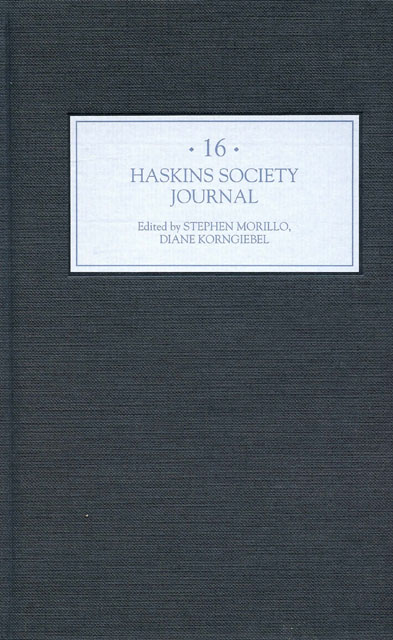Book contents
- Frontmatter
- Contents
- Editor’s Note
- Abbreviations
- 1 Hallucinations of Power: Climates of Fright in the Early Twelfth Century
- 2 Sites and Occasions of Peacemaking in England and Normandy, c. 900–c. 1150
- 3 Trans-border Transactions: Patterns of Patronage in Anglo-Norman Wales
- 4 Lay Piety, Confessional Directives and the Compiler’s Method in Late Anglo-Saxon England
- 5 Furor Teutonicus. A Note on Ethnic Stereotypes in Suger’s Deeds of Louis the Fat
- 6 Law and Theology in Gilbert of Foliot’s (c. 1105/10–1187/88) Correspondence
- 7 A Lost Law of Henry II: The Assize of Oxford and Monetary Reform
- 8 The Renaissance of the Twelfth Century Before Haskins
- 9 ‘Hobbes’, ‘Dogs’ and Politics in the Ireland of Lionel of Antwerp, c. 1361–6
2 - Sites and Occasions of Peacemaking in England and Normandy, c. 900–c. 1150
Published online by Cambridge University Press: 23 March 2023
- Frontmatter
- Contents
- Editor’s Note
- Abbreviations
- 1 Hallucinations of Power: Climates of Fright in the Early Twelfth Century
- 2 Sites and Occasions of Peacemaking in England and Normandy, c. 900–c. 1150
- 3 Trans-border Transactions: Patterns of Patronage in Anglo-Norman Wales
- 4 Lay Piety, Confessional Directives and the Compiler’s Method in Late Anglo-Saxon England
- 5 Furor Teutonicus. A Note on Ethnic Stereotypes in Suger’s Deeds of Louis the Fat
- 6 Law and Theology in Gilbert of Foliot’s (c. 1105/10–1187/88) Correspondence
- 7 A Lost Law of Henry II: The Assize of Oxford and Monetary Reform
- 8 The Renaissance of the Twelfth Century Before Haskins
- 9 ‘Hobbes’, ‘Dogs’ and Politics in the Ireland of Lionel of Antwerp, c. 1361–6
Summary
The subject of warfare in medieval England and Normandy between c. 900 and c. 1150 has tended to attract more scholarly attention than that of peacemaking. During the last twenty years or so, however, peacemaking in these areas during this period has become the focus of an increasing amount of research, which has done much to illuminate this important aspect of medieval society. A further contribution to the field can be made by examining in more depth some of the sites where English and Norman rulers and aristocrats made peace with their opponents, and some of the occasions on which they did so. Such a study has much to tell us about how these people approached and orchestrated peacemaking, and the complex range of influences and ideas that helped to shape and determine their actions.
Peacemaking in England and Normandy during this period occurred in numerous sites and on many occasions. A list of them, by no means comprehensive, would include cathedrals, monasteries, churches, shrines and sanctuaries; royal, ecclesiastical, and baronial courts, councils, and households; church dedication, knighting, and wedding ceremonies; conveyances of land; hunts, battles, and sieges; religious seasons and festivals; feasts and other meals; and rivers and frontiers. A case can be made that these sites and occasions were often carefully chosen for a variety of reasons. These might include guaranteeing the security and maintaining the honor and status of disputants, avoiding confrontation and lessening the possibility or limiting the scale of violence, utilizing pacificatory social and spiritual influences and pressure, exploiting or creating rituals, environments, and ambiences conducive to peacemaking, and facilitating understanding and reconciliation in other ways. Only a few of the examples that underpin this argument can be discussed within the confines of a short paper. These will relate primarily to peacemaking near rivers, at royal courts, in churches, and during religious seasons and festivals.
It is well known that Norman rulers frequently engaged in peace or other diplomatic negotiations with French kings and others on or near rivers, which often coincided with territorial frontiers. But work on these meetings has tended to concentrate more on what they reveal about the ‘feudal’ and political relationships between, and the respective status and authority of, the participants, than on what they tell us about the role in peacemaking of river locations.
- Type
- Chapter
- Information
- The Haskins Society Journal2005. Studies in Medieval History, pp. 12 - 26Publisher: Boydell & BrewerPrint publication year: 2006
- 1
- Cited by

